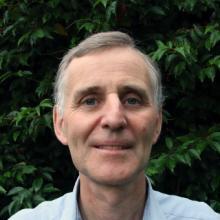Professional summary
Research Interests
Garry’s current research interests cover terrestrial biosphere and land-atmosphere interactions and the use of Earth Observation data for model evaluation. He is the UKCEH PI for and contributes to the NERC National Capability project UK Earth System modelling (UKESM). Through recent projects, Garry has become involved in crop modelling (e.g., CropNET, CSSP Brazil Agriculture, CSSP China VERDANT). He is currently involved in a number of NERC projects concerning the Gloabl Methane cycle (Global Methane Highlight Topic, CEH PI, 2016-2020; Under-recognized Cold Season and Upland Tundra Arctic Methane Sources, co-I, 2017-2021), which use surface and satellite atmospheric methane measurements to assess and develop the methane wetland emission parameterisation in the JULES land surface model (https://jules.jchmr.org/). He was the PI for one of the NERC 1.5° Warming projects CLIFFTOP (Climate feedbacks from wetlands and permafrost thaw in a warming world, https://www.ceh.ac.uk/our-science/projects/understanding-pathways-and-impacts-15c-rise-global-temperature).
Garry managed the ALANIS Methane project for the European Space Agency (http://www.alanis-methane.info). Garry was a member of the CarbonSat mission advisory group; CarbonSat is a candidate for the European Space Agency’s Earth Explorer 8 mission. Garry is now the Science Officer in the International Project Office of the Future Earth Global Research project iLEAPS (the integrated Land Ecosystem Atmospheric Processes Study, https://www.ileaps.org) and is a member of the ILEAPS Scientific Steering Committee.
Garry has an extensive background in atmospheric science with over 25 years experience of atmospheric chemistry and air pollution issues. Over the years, he has worked on many of the topical issues of concern: polar ozone depletion (or ‘Ozone Holes’), acid deposition, photochemical oxidant formation in the lower troposphere and most recently on particulate matter. The research was initially laboratory-based but later became focussed on measurements and modelling.
